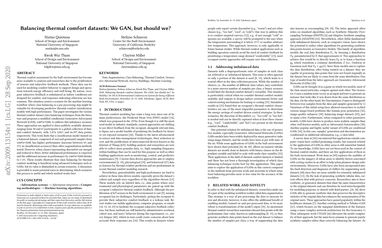Balancing thermal comfort datasets: We GAN, but should we?

Thermal comfort assessment for the built environment has become more available to analysts and researchers due to the proliferation of sensors and subjective feedback methods. These data can be used for modeling comfort behavior to support design and operations towards energy efficiency and well-being...
By nature, occupant subjective feedback is imbalanced as indoor conditions are designed for comfort, and responses indicating otherwise are less common. This situation creates a scenario for the machine learning workflow where class balancing as a pre-processing step might be valuable for developing predictive thermal comfort classification models with high-performance. This paper investigates the various thermal comfort dataset class balancing techniques from the literature and proposes a modified conditional Generative Adversarial Network (GAN), $texttt{comfortGAN}$, to address this imbalance scenario. These approaches are applied to three publicly available datasets, ranging from 30 and 67 participants to a global collection of thermal comfort datasets, with 1,474; 2,067; and 66,397 data points, respectively. This work finds that a classification model trained on a balanced dataset, comprised of real and generated samples from $texttt{comfortGAN}$, has higher performance (increase between 4% and 17% in classification accuracy) than other augmentation methods tested. However, when classes representing discomfort are